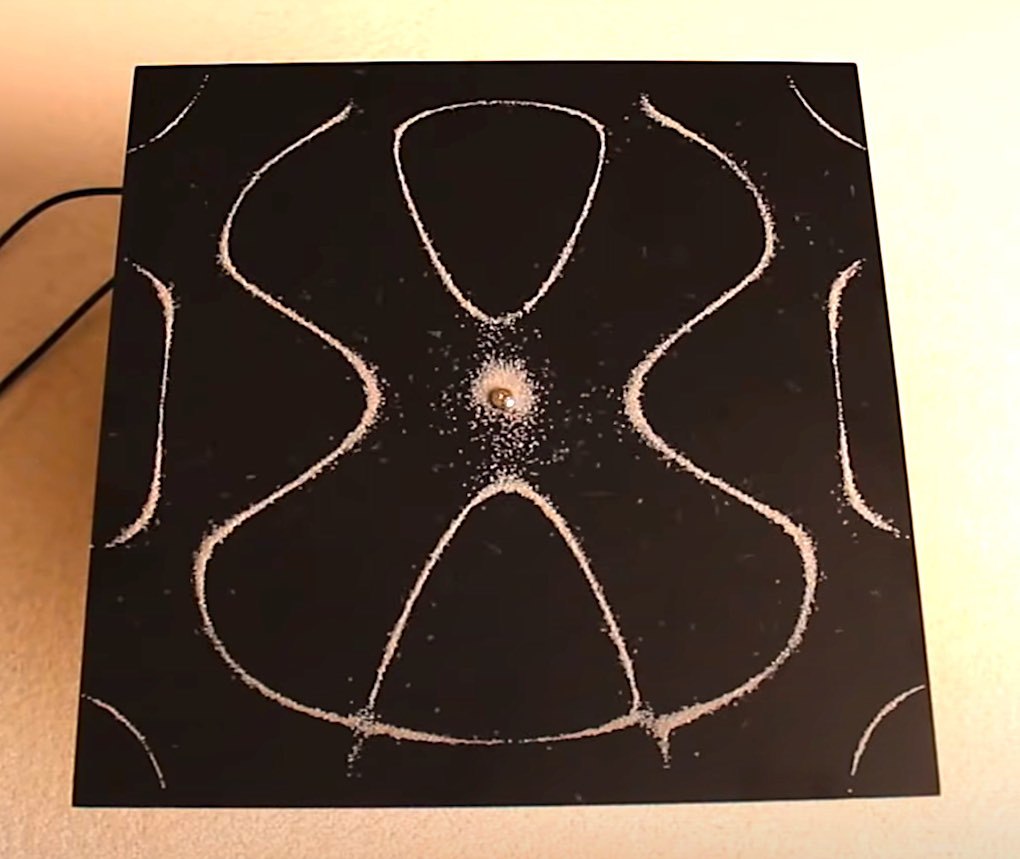- in Production by Bobby Owsinski
Chladni Figures: The Resonance Experiment That Still Amazes

We’ve all heard the stories about a modern sturdy bridge being brought down due to oscillation from wind or pedestrians walking at just the right frequency that weakens it. That’s known as resonance, and it’s something that occurs across the scientific world. One of the coolest resonance experiments has to do with sound and something we’ve come to known as Chladni figures.
This was named after Ernst Chladni, who was a German-born Hungarian physicist and musician who did pioneering work in acoustics as well as the study of meteorites. What he’s most known for is his technique that shows the complex patterns of vibration in a rigid surface, in this case, a steel plate. This technique isn’t new, by the way, as he wrote about it in a book way back in 1787.
What you’re going to see in the following demonstrations is what happens to some common sand when you change the vibration frequency of the plate using a modern oscillator. In the video you’ll be able to see how the sand develops some intricate patterns as it’s pushed away from the areas of vibration and gathers in the places where the surface remains motionless (called nodal lines).
The beautiful patterns that emerge are know called Chladni figures, even though it was really Robert Hooke who first noticed nodal patterns in vibrating glass plates way back in 1680.
Chladni figures have been used in instrument making for a long time, especially for violins and violas. They’re used to shape the critical front and back plates of the instrument’s resonance box.
According to Smithsonian American History, “Fine metal filings are sprinkled on the wooden plates, which are then vibrated (at as many as seven different frequencies) to produce a series of patterns. Much of the final shaping of the plates is directed towards ensuring that the patterns on both of them match and are symmetrical. This symmetry is what allows the resonator to move as a single mass and to produces the richest, most beautiful tones.”
Below you’ll find 2 videos. On the first you can see the frequencies but you can’t hear them, on the second you can hear the frequencies but they’re not spelled out on the screen.

